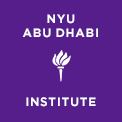 The second session of “A Corpus Not a Canon: A Workshop on the Library of Arabic Literature,” a panel series hosted by Dame Marina Warner and LAL General Editor Philip Kennedy at All Souls College, Oxford, this April, focused on the different genres and modes of writing embraced by the LAL. On the panel were LAL board member Julia Bray, LAL Executive Editors James Montgomery and Shawkat Toorawa, and LAL editor-translator Beatrice Gruendler. The session focused on three volumes: Two Arabic Travel Books, edited and translated by Tim Mackintosh-Smith and James Montgomery; Consorts of the Caliphs, by Ibn al-Sāʿī, edited by Shawkat Toorawa and translated by the Editors of the Library of Arabic Literature; and The Life and Times of Abu Tammam, by Abū Bakr al-Ṣūlī, edited and translated by Beatrice Gruendler.
The second session of “A Corpus Not a Canon: A Workshop on the Library of Arabic Literature,” a panel series hosted by Dame Marina Warner and LAL General Editor Philip Kennedy at All Souls College, Oxford, this April, focused on the different genres and modes of writing embraced by the LAL. On the panel were LAL board member Julia Bray, LAL Executive Editors James Montgomery and Shawkat Toorawa, and LAL editor-translator Beatrice Gruendler. The session focused on three volumes: Two Arabic Travel Books, edited and translated by Tim Mackintosh-Smith and James Montgomery; Consorts of the Caliphs, by Ibn al-Sāʿī, edited by Shawkat Toorawa and translated by the Editors of the Library of Arabic Literature; and The Life and Times of Abu Tammam, by Abū Bakr al-Ṣūlī, edited and translated by Beatrice Gruendler.
What happens when the Library of Arabic Literature stitches together different genres and modes of writing into one corpus, one conversation, inside one blue jacket? What discordances, what anxieties does it produce? This was a question asked by Oxford’s John-Paul Ghobrial at the end of the second session of the Library of Arabic Literature’s April 25 workshop.
This session looked at different genres and modes of writing embraced by the LAL project, focusing on three volumes. The first was two very different travel books, by Abū Zayd al-Sīrāfī and Ahmad Ibn Faḍlān, that have been joined together under one cover; the second was Consorts of the Caliphs, by Ibn al-Sa’i and collaboratively translated; and the third The Life and Times of Abū Tammām by Abū Bakr al-Ṣūlī, which editor-translator Beatrice Gruendler called a “Russian doll” of nested narratives.
The first two are what we’d easily recognize today as travel writing, the second could be history or could be a special thirteenth-century issue of Cosmo, and the third is perhaps a biography, or perhaps poetry, or perhaps poetics. As panel chair Julia Bray said in her introduction, these three books exemplify the problems—or possibilities—of genre. The first also points to what happens when very different texts are stitched together under one umbrella.
Tim Mackintosh-Smith, who edited the first of the travel narratives, al-Sīrāfī’s Accounts of China and India, wasn’t able to attend the All Souls Workshop. But he suggested in an earlier interview that tenth-century readers of Accounts of China and India approached the writing much as we might look at it now. “It’s a bit similar to reading the pages in the New York Times about the state of the economy in China.”
As for the Ibn Faḍlān, one of his transmitters, Yāqūt, said that the text was “well known and popular with people. I saw many copies of it.” Although both potentially popular in their time, and both recognizably travel narratives, they are also two very different books. The first are the assorted collections of an arm-chair traveler [did someone say this during the panel? Since the Accounts is really two books, and we don’t know much about either, it might be a stretch to say that al-Sirafi is an armchair traveler: even if he wasn’t a well-traveled merchant himself, they were his direct sources, and he lived in two major Gulf seaports, Siraf and Basra. “Armchair traveler” makes him sound like he never left his library], while the other is, as Bray said, an “adventure story.”
There were pragmatic reasons for putting them together in one book, as Mission to the Volga translator James Montgomery explained. But it seemed to grow into a conscious attempt to represent the tradition’s many modes of writing.
“One thing we consciously did was we kept myself and Tim out of conversation,” Montgomery said. “Tim was edited by Phil [Kennedy] and I was edited by Shawkat [Toorawa]. We wanted to achieve what Julia [Bray] has just very, very perceptively identified, the sort of plurivocality of the tradition. On the one hand, a set of accounts; on the other, the first and most extensive and most astonishing first-person narrative in Arabic.”
Reviews, Montgomery said, have been “rather bemused by this ‘lack of editorial oversight.’ But, he said, “It was editorial oversight because that was the effect we wanted to produce. I think that aspect of it actually is true to the tradition.”
Although the two are very different books, they are both fascinating travel narratives with potentially popular appeal. They also communicate with each other in interesting ways. At a talk at the Abu Dhabi International Book Fair in May, Kennedy and Montgomery read aloud from vivid portions of both texts, both of which reflected on modes and meanings attributed to death.
Is this history?
Consorts of the Caliphs is very generically different from either of these, presenting capsule biographies of different well-connected women of the eighth through thirteenth centuries. But like the travel texts, it is also intriguing for a contemporary audience and was a popular book in its time. “This is a book by a historian,” Bray said during her introduction to the workshop’s second session. He was “a historian who wrote large amounts of different history, much of which has now been lost, and who wrote in many different formats and I suppose you could say genre. And no doubt, as a historian, he would’ve considered this book a kind of history.”
But unlike the continuity between ancient and contemporary readings of al-Sīrāfī and Ibn Faḍlān’s narratives, modern readers, Bray thinks, will interpret Consorts differently.
“Modern historians, I think, would probably pooh-pooh it as a work of history, and I think they would be quite wrong to do so. There is a certain mindset about modern historians of the Middle East which is extremely insensitive to questions of genre and mode, and which thereby jettisons an awful lot of vital intellectual and cultural history.”
This book is, she said, “intellectual history in the sense that Joe Lowry was talking about [in the first session]: People confront problems, and they try, if not to solve them, at any rate to do something worthwhile with them. And that is very much what Ibn al-Sa’i is doing” with Consorts of the Caliphs.
When project editor Shawkat Toorawa spoke during the second session about Consorts, he emphasized the collaborative nature of the translation, which also echoes the LAL focus on plurivocality. This collaborative method, he said, means: “It’s a new day.”
Even in the LAL’s choices of what to translate, Toorawa said, are collaborative: “It’s not a small group of people who’ve decided what the corpus is, or what the canon is. It really is trying to embrace as large a group of people who are enamored of the tradition as possible.”
A nesting doll of genre within genre
The Life and Times of Abu Tammam, seems on first glance, as Bray said in her introduction, as though it should be a biography. And it certainly “is focused on a person and his poetry.” But is it biography, or life-writing—or is it other things as well?
“The book itself is a Russian doll of different things,” Gruendler said, “and that’s why I thought it would be a useful book to translate. It has a number of genres, since we’re talking about genres, in it.”
She listed off several, from the smallest nesting-doll to the largest. The smallest was the “nuggets” of poetic vocabulary. These, she said, are put into the poems, “but they’re sort of cut to pieces and dramatically abbreviated, so you only get the good parts of the poems.”
After that, “the poems are inside stories, and that shows you the whole thing, what is actually going on, the ‘why bother.’” This “why bother” aspect of the poetry was important, Gruendler said, as the poems had a function: They got people out of prison, got debts paid, and did all sorts of other practical work, while also being high art.
In the ninth century, the debate that swirled around these poems, Gruendler said, “was the hottest thing that moved at that time in Baghdad.” Then, a hundred years later, when the debate is “lukewarm,” a compiler puts these stories together. This creates another layer, she said, such that the reader is moving between “two time tracks.”
And that, Gruendler says, is the largest nesting-doll, or perhaps the beginning of another genre: “poetics. And how do you criticize? How do you do that?”
Uniformity and distortion
Besides the interest of the books, another thing that brings together the disparate, plurivocal LAL series is its emphasis on readability, which Montgomery, during his presentation, called a “distortion.”
In Montgomery’s first translation of the Ibn Faḍlān, which he did long before the LAL was a twinkle in Phil Kennedy’s eye, he’d tried to echo the Arabic in the English. But “in order to achieve the library’s mission,” when re-translating the work for LAL, “I had to simplify, to reduce, to distill, and to distort.”
The first issue, he said, was the title.
“I wanted The Volga Mission, as though it was a Robert Ludlum story,” Montgomery told the workshop audience. “My colleagues said no, no, you’re getting carried away.”
Later in the session, Toorawa talked more about readability and the LAL series, which both reinvents and standardizes certain usages. In the past, Toorawa said, most Arabic-English translators have rendered an address to the leader as, “O, Commander of the Faithful.” But, “setting aside whether it’s even a defensible translation, we decided to just say ‘sire’.”
“We decided that actually, in distorting, it restored the tenor and the tone of that dialogue. It is one of the ways in which a distortion has helped the English reader make sense of the dialogue.” The LAL translators are able to make these “distortions,” in part, because, “We are liberated by the presence of the Arabic text on the left.”
The reader who can appreciate both languages can glance at the facing page and see what “sire” maps back to. But, Toorawa said, “for the English-only reader, there’s a way we’ve been able to introduce them into a text that is not completely inscrutable. It’s fine not to domesticate, but you don’t want to be completely inscrutable.”
At the end of the session, John-Paul Ghobrial circled back to Montgomery’s anxiety around distortion, and the question of working with texts that are generically very different, and written in very different contexts. He asked: What happens when you place them all within each other as a corpus?
Bray said that the translations themselves speak to this issue, particularly Consorts of the Caliphs. “Some of the poetry, the expert tells us, is authentic and some of it is spurious. And how do you tackle that in your translation?”
She and Montgomery also talked about other anxieties—about how people in the field were no longer trained to edit texts, and how translation wasn’t an activity given time by Western universities. “By our massive collective investment in this, we want to try and reinstate this as a scholarly activity and get people time to do it and rewards to do it.”
“The[re are] distortions that we may be bringing to the material by bringing it under one umbrella, because it’s what we can do, or what we feel needs doing.” But these, Bray said, are “not just focused on the corpus itself, they’re focused on what is in some ways an even larger enterprise.”
—M. Lynx Qualey, Arabic Literature (in English)

